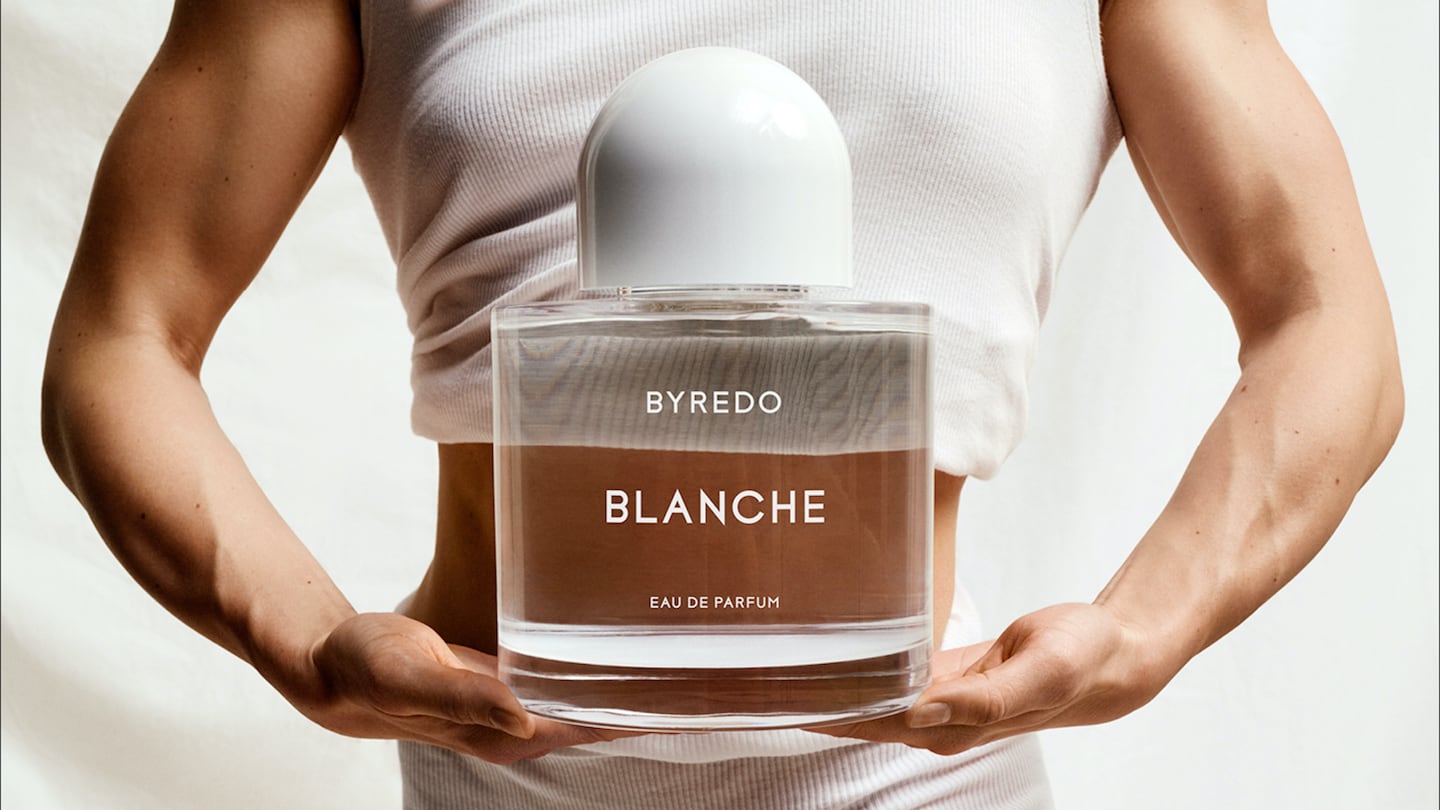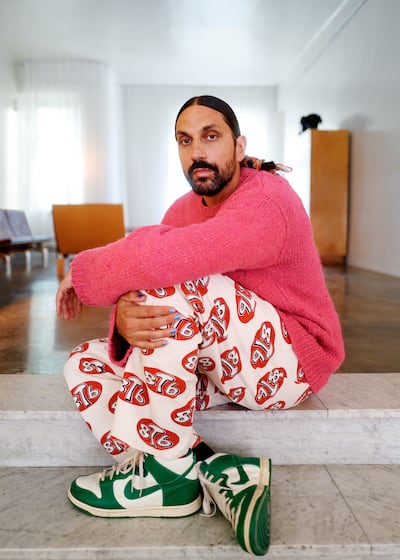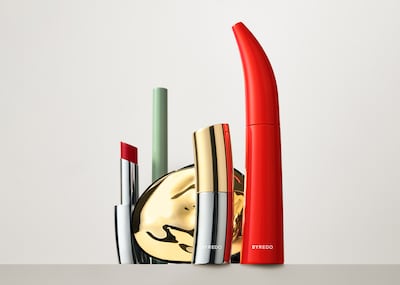
The Business of Fashion
Agenda-setting intelligence, analysis and advice for the global fashion community.

Agenda-setting intelligence, analysis and advice for the global fashion community.

Luxury fragrance is booming — and Byredo is benefitting.
Last year, high-end fragrance outperformed all other beauty categories in the US regarding revenue growth, and, for the first time, reached parity with premium skincare sales, according to market research firm NPD. That growth is happening alongside surges in the wider perfume market: market research firm Euromonitor International forecasts the global $44.3 billion fragrance market to grow a further 20.6 percent by 2025.
For Byredo, the beauty brand best known as the maker of cult fragrances like Gypsy Water and Mojave Ghost, which retail at €195 or $276 for a 100ml bottle, the demand for high-end perfume translated to booming sales. In 2021, it posted €119 million ($134 million), up 63 percent year-on-year and almost double its pre-pandemic turnover of €62 million ($70 million) in 2019.
Those sales may be a fraction of what beauty giants like Estée Lauder generate. (Last year, it saw $1.9 billion in fragrance sales.) Yet Byredo has become a standout at stockists like Liberty and Harrods.
ADVERTISEMENT
“The brand is amongst our best performers,” said Mia Collins, Harrods’ head of beauty. “The personal scents are particularly popular with our customers.”
But Byredo isn’t simply riding the wave of a thriving perfume market. Ben Gorham, Byredo’s founder, spent years laying the groundwork for explosive growth, which helped the company thrive amid the pandemic. Over the past two years, the brand saw sales surge, launched into the cosmetics space and appointed a former LVMH executive as its first chief executive. Next up: A skin care line and pushing revenue further.
“I think about, as a business, what do we need to do to get to a billion in sales?” Gorham told BoF. “As it stands now, I truly feel like we’re in the infancy of what this brand can be. I see only possibilities.”
I truly feel like we’re in the infancy of what this brand can be. I see only possibilities.
Building Byredo
Gorham founded Byredo in 2006 as a niche fragrance brand selling genderless scents with kooky names and minimalist branding, a stark contrast to the designer fragrances that dominated the market, which were bottled in elaborate packaging and, more often than not, sold with a celebrity endorsement and a hyper-sexualised, multi-million dollar advertising campaign.

“It was a breath of fresh air at a time when fragrance was so contrived, and the market was saturated with gimmicky and overly commercialised launches,” said Sarah Coonan, buying director at London-based department store Liberty, which first launched Byredo in 2009. “Byredo felt so different and ultra-confident in its simplicity.”
Byredo’s approach to distribution, however, drew from the luxury playbook. Gorham wanted the brand to be built with scarcity, carefully controlling product supply to keep Byredo aspirational. While this limited growth potential in the short term, Gorham had an eye on the future.
“I was really trying to compete with the big brands, and I needed to make sure that the perception of the brand and the experience and the product continued to be excellent in every way. That meant pacing ourselves,” said Gorham. “Peaking too early was a fear.”
ADVERTISEMENT
To deliver newness without over-saturating the market with its core fragrance products, in 2019, it launched Byproduct, a rotating roster of non-beauty products, such as clothing, eyewear and other accessories. Gorham viewed Byproduct as a brand story-telling tool, rather than a revenue driver.
In 2013, Gorham sold a majority stake in the company to private equity firm Manzanita Capital, which also owns French perfume house Diptyque and high-end British beauty retailer Space NK. Even though the brand at the time was still a fledgling one, the move allowed it to establish owned subsidiaries in key global markets, “mostly to retain a certain level of control,” Gorham said. The brand also invested in the technology and logistics to power its e-commerce platform, growing this alongside its own network of retail stores.
When the pandemic hit, the diversity of the brand’s distribution across markets and channels proved an asset, Gorham said. However, the brand had to act quickly to recalibrate its strategy in each market. In cities like London, Paris and New York, where tourism drove as much as 50 percent of sales, it pivoted its flagship stores to focus on local clientele, working with local makeup artists and influencers to build awareness, said Gorham. Byredo also began offering curbside pick-up at stores and same-day delivery services.
Today, sales are split roughly equally between Europe, the US and Asia, according to Gorham. China, a notoriously difficult fragrance market to crack, is its fastest-growing territory. Meanwhile, the brand’s direct-to-consumer business makes up almost half of its business, Gorham said.
The Next Chapter
The pandemic marked a turning point in the brand’s maturity. In September 2020, Gorham hired former LVMH executive Nicolas Cordier as Byredo’s first CEO. A month later came the debut of a makeup line created in collaboration with famed makeup artist Isamaya Ffrench, even though the pandemic sent sales of an already depressed cosmetics market tanking.

Almost 18 months into launch, makeup remains a modest part of the business, contributing somewhere between 10 percent and 20 percent of the brand’s sales in the doors where it’s sold, Gorham said. But like fragrance before it, Byredo has purposefully limited the line’s distribution, making it hard to compare sales with its other products.
Nevertheless, the line served to bring a new, younger customer into the Byredo world, one who may not be able to afford to spend €195 on a perfume, but could indulge in a €41 lipstick or €36 eyeliner. A coming skin care line is due to launch next year, said Gorham.
ADVERTISEMENT
“A large part of what I think about is how do we continue to evolve and to stay relevant,” said Gorham. “You start to understand all your customers cannot be 15 years older than they were 15 years ago. You have to continue to speak to new groups, people of different ages.”
A move into skin care is a natural next step for any beauty brand looking to grow its market share. McKinsey estimates skin care will account for 34 percent of the global beauty market by 2024, up from 29 percent in 2020.
Cracking the category, though, won’t be easy. Like fragrance and makeup, skin care is heavily saturated, and consumers tend to be more cautious with skin care purchases versus other beauty segments, according to McKinsey analysts.
But Byredo’s biggest challenge will likely lie in keeping up its dramatic growth without losing its brand allure. Until now, Byredo leveraged scarcity and its reputation as a niche luxury brand to maintain its coveted nature — that’s a quality that’s notoriously hard to scale.
For now, at least, onlookers say it’s managing to strike the right balance.
“These days the brand appeals to a wider customer but it hasn’t sold out to gain mass appeal,” said Coonan. “By protecting the core values of the brand and maintaining the focus on a more style-conscious customer, Byredo still maintains the insider vibe that made its early success so powerful.”
Taking a page from the streetwear playbook, niche perfume houses offer collaborations as an attractive alternative to the standard licensing deal.
From fast-growing pure players like Amouage and Byredo to top-end launches from luxury's biggest names, the world of niche fragrances is getting a whole lot bigger.
What was once pure fantasy now puts commerciality first. What’s lost, and what’s gained, in the new era of couture.
As in-person retail continues to recover, store owners and marketers are working hard to press the main advantage analogue shopping has over digital: its appeal to all the senses.
What had once been a nimble, innovative company, became slow-moving and cautious causing it to miss out on what is now a strong beauty market because it retreated precisely when rivals went all in.
According to an email viewed by The Business of Beauty, the company will be on hiatus while it establishes a sustainable path to return as a new company.
The surfing legend, a vocal opponent of chemical-based sun protection, is launching his own line of natural skincare products this week.